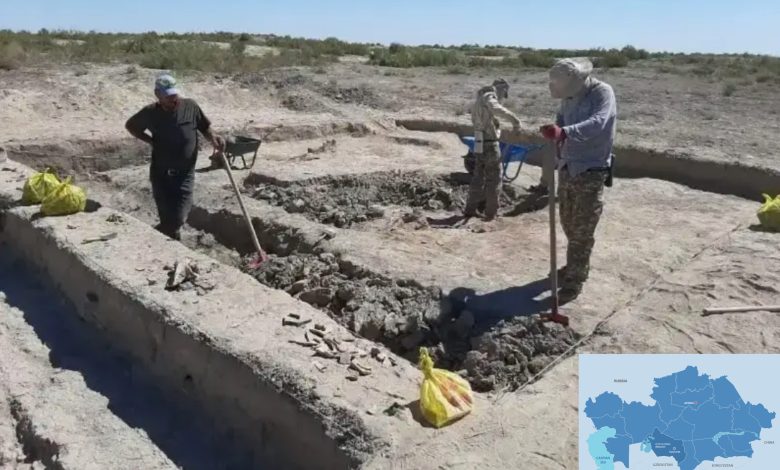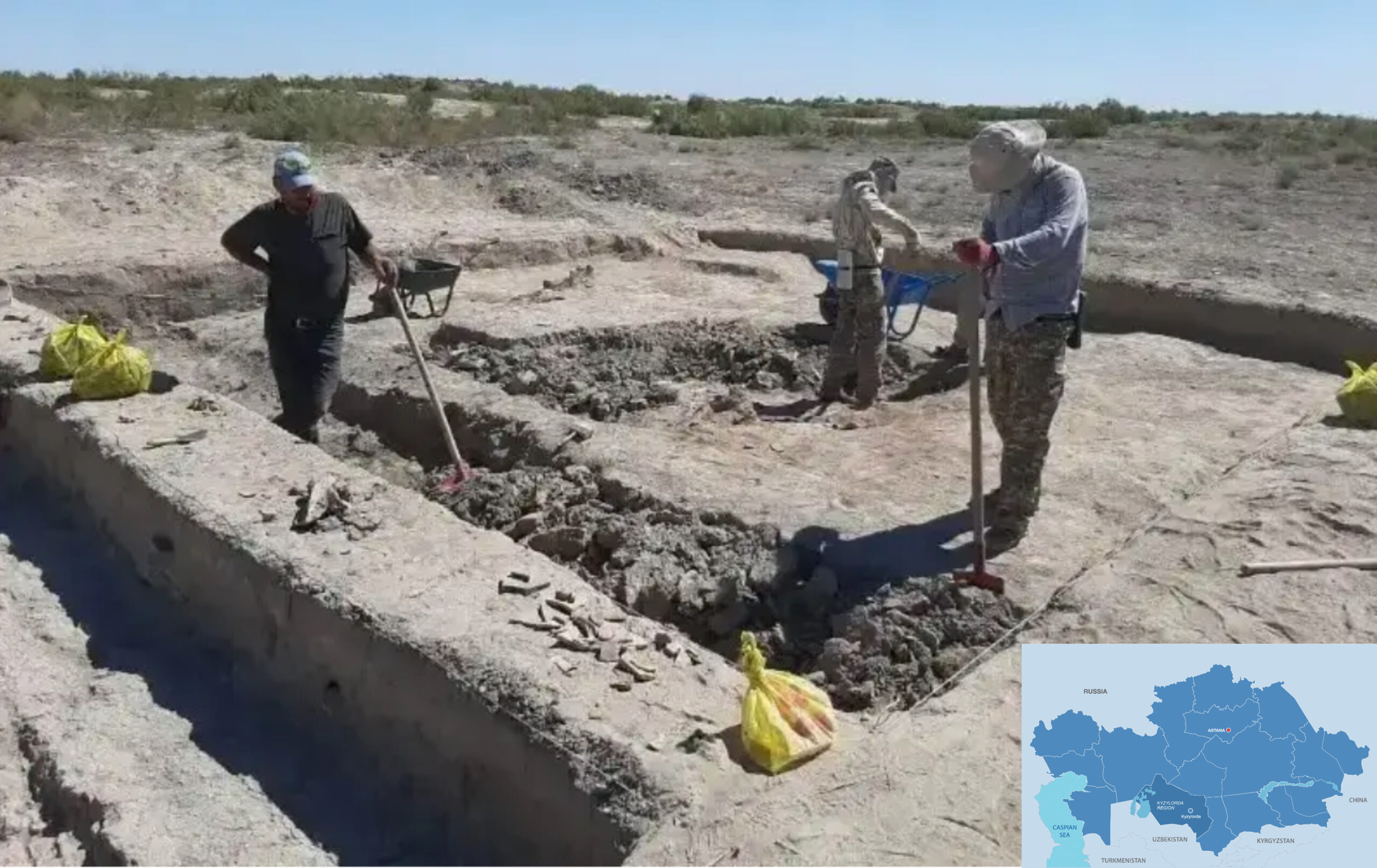Researching Ancient Cities in Kazakhstan: Glory of Asanas

Research into ancient cities in Kazakhstan continues to unveil new chapters of history. One city that has drawn particular attention from scholars is Asanas, one of the largest urban centers of the Golden Horde era, located in the Kyzylorda region. Archaeological excavations and historical documents offer a fresh perspective on its significance in the region’s history.

Asanas, one of the largest urban centers of the Golden Horde era, located in the Kyzylorda region. Photo credit: Kyzylorda University of Korkyt ata. Click to see the map in full size. The map is designed by The Astana Times.
Asanas is situated eight kilometers southwest of the village of Aidarly in the Syrdarya district. Once a thriving settlement at the crossroads of trade routes, it is evidenced by numerous written sources and archaeological finds. Despite its significance, Asanas remained largely overlooked by researchers for many years, and comprehensive excavations only began in recent decades.
Historical significance of Asanas
Asanas was founded before the Mongol invasion and reached its peak during the Golden Horde era. This city was a key point along the Great Silk Road, connecting the East and West. According to Azilkhan Tazhekeyev, a candidate of historical sciences and the head of the Astana branch of the Alkey Margulan Institute of Archaeology, studies of Asanas provide insights into how cities in this part of Kazakhstan developed during the Middle Ages.
Tazhekeyev and his team not only examined urban structures but also focused on the necropolis and the mausoleum of Asanas Ata, which still retain elements of architectural artistry from that time. Scholars have established that other settlements, such as Asanas-1, Asanas-2, Asanas-3, and the city of Akhmet, were located around Asanas, highlighting its regional significance.
The Mongol invasion and the city’s restoration
The fate of Asanas is closely linked to the Mongol conquests. Historical records indicate that Genghis Khan’s army took the city after capturing Syganak. Although the inhabitants of Asanas bravely resisted, the city was ultimately destroyed, much of its population was killed, and its buildings razed. Nevertheless, like other cities along the Syrdarya River, Asanas was restored and continued to flourish until the 14th and 15th centuries.

Photo credit: Kyzylorda University of Korkyt ata.
This dramatic history is supported by the accounts of European explorers. The Italian Franciscan monk Giovanni Plano Carpini, describing his travels along the lower reaches of the Syrdarya, mentioned numerous ruined cities, including Asanas. His works became one of the key sources through which scholars were able to reconstruct the region’s past.
Archaeological discoveries
Archaeological research in Asanas began in the mid-20th century when the Khorezm archaeological and ethnographic expedition, led by Nina Vakturskaya, conducted the first exploratory excavations. Among the artifacts found were ceramic items dating back to the 12th-15th centuries, as well as objects from the earlier Oghuz period (8th-9th centuries). These discoveries suggested that the city emerged in the 7th-9th centuries and persisted until the 15th century.

Photo credit: Kyzylorda University of Korkyt ata.
Particular attention was drawn to the remains of city fortifications. The city was surrounded by powerful walls, which reached a height of 5 meters and had a foundation width of 15 meters. A deep moat surrounded the walls, indicating a high level of defensive technology at that time. In 2000, Tanirbergen Mamiyev, a lecturer at Kyzylorda State University named after Korkyt Ata, conducted additional excavations that confirmed this information. He also discovered 20 towers that fortified the city walls, while surveys conducted in 2005 and 2012 provided even more information about the urban infrastructure.
Water system and agriculture
One of the most significant archaeological discoveries was the finding of an ancient irrigation system that provided water to the city. Researchers established that a main canal, known as Asanasozek or Torangylsay, ran through the southern part of the city. This canal followed the bends of the Inkar-Darya River and was used for both drinking water and irrigation of agricultural lands. The canal’s depth reached three to five meters, while its width was 10-15 meters, allowing for effective use in meeting the city’s needs.
The legacy of Asanas
The grandeur of Asanas, its role in Kazakhstan’s history, and its influence on the region are supported by numerous written and archaeological records. In ancient texts, this city is frequently mentioned alongside other major settlements along the Syrdarya, such as Sauran, Sygnak, Jankent, and Barshynkent. Alkey Margulan, a renowned scholar, noted that over a thousand ancient cities existed along the Syrdarya, with Asanas being one of the most significant among them.
Archaeological research in Asanas continues, and each new discovery offers deeper insights into the culture and economy of this region during the Middle Ages. Excavations of the ancient city help to restore the connection across time and provide answers to questions about the lives of the people who inhabited this land centuries ago.
This article was originally published on Kazinform.





